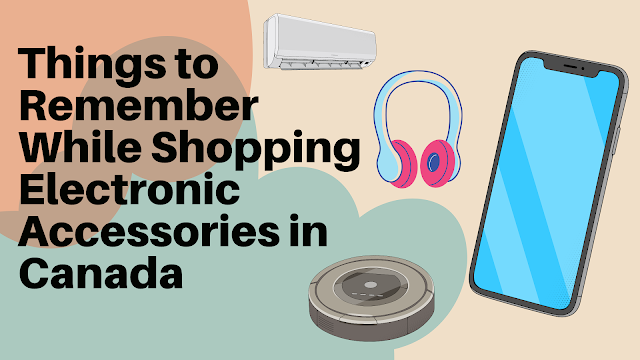Buying Over Ear Wireless Headphones: A Complete Guide
Looking for the best Over Ear Wireless Headphones for gaming, music, or calls? Read our buying guide to find the right headphones.
The variety of type, brand, and price options for new headphones is overwhelming. Additionally, you may not be aware of several headphone selection criteria.
The market is full of audio companies, some well-known and some newer ones gaining popularity due to their products' quality and price. Sony, Turtle beach, Skullcandy, Kingston, HyperX, Bose, Logitech, Audio-Technica, and others are well-known audio brands..
If all that sounds confusing and you need serious counseling, our headphone purchase guide should help.
How to Buy Headphones?
After you've set a price range for the headphones you intend to buy, the next step is to settle on a specific model. In-ear headphones, on-ear headphones, and over-ear headphones Bluetooth Over Ear Headphones are the three most common forms of headphones.
Types of Headphones
In-Ear
In-ear headphones, sometimes called earphones or earbuds, are the most portable type. These headphones range from throwaway devices seen on airplanes to earbuds included with smartphones to high-end buds that try to sound like full-size units. Sport variants have wings or fins for a snug fit.
Compact and light
Great soundproofing
Active lifestyle-friendly
Cons
Tangle easily
Easily lost
Size usually degrades sound.
On-Ear
On-ear or "supra-aural" headphones lay on your outer ears but do not completely surround them.These headphones have an over-the-head band. These are open-back or closed-back and lighter than Bluetooth Over Ear Headphones. On-ears allow greater ambient noise than over-ears.
Pros
Compact
Less heat than over-ear headphones
Cons
Low noise isolation
Discomfort (too much pressure on ears or pinches ears)
Sound leaks
Lower bass than over-ears
Over-Ear (Over Ear Wireless Headphones)
Over-ear headphones are circumaural headphones. These closed-back and open-back headphones are the largest of the three varieties. The most comfy headphones are over-ear closed-back ones.
Pros
Best sound quality, most comfy
Greater soundstage
Isolation
Max bass and volume.
Cons
Produces heat around ears
Costlier
Closed or Open-Back?
Closed-back headphones seal sound inside the cups and block outside noise. This can make your music sound strange, especially compared to open-back headphones, although they do have a punchier bass output due to the small echos in the bottom notes. However, they are excellent for commuting and listening to music in public settings like offices, airlines, and more. Recording and mixing require isolation, thus these are superior.
Open-back headphones let users hear outside noise. Airflow through the ear cups prevents pressure buildup. Open-backs make luxury headphones sound more natural. These headphones are only appealing in utter silence. They leak a lot of sound and let a lot in, distracting you from listening. In a public location, everyone sitting near you will be able to hear the music and complain about it! They are also more fragile than closed-back Over Ear Wireless Headphones since moisture can easily sneak in and damage the circuits.
Open-back headphones sound more natural, but closed-backs are ideal for listening to music outside your home or studio.
Wireless vs. Wired
Wireless headphones have dominated the market in recent years. Since Apple released the AirPods in 2016, most audio companies have entered the lucrative market for truly wireless earphones. Let’s take a look at wired and wireless.
Wired Headphones
Wired headphones don't lag and don't need batteries like wireless ones. Many smartphones use USB-C or lightning to replace the 3.5mm jack. However, some cables tangle and break quickly.
Wireless Headphones
New Bluetooth codecs, like AAC, AptX, AptX HD, and AptX Low Latency, make it easier to hear and fix latency problems with wireless headphones. Wireless headphones cost more. Another issue is maintaining charge; Bluetooth Over Ear Headphones last 15-30 hours and wireless earbuds 6–18 hours.
.
Impedance
The headphones' impedance must match the source. We won't define impedance technically. Just remember that most headphones with low impedance (16–32 ohms) require less power to drive high audio levels. Low-impedance headphones work well with cellphones and portable audio players with weak amplification. High-impedance headphones need more power for good sound. Studio headphones with an impedance of 250 ohms, like the Audio Technica, need a specialised power supply like an amplifier. Therefore, thoroughly research this. Beware that loud amplifiers can "blow out" low-impedance headphones.
Sensitivity
If you're finicky about headphone volume, check the sensitivity. Headphone sensitivity determines volume. Most Over Ear Wireless Headphones are 96–110 dB sensitive. Avoid headphones below 85 dB and above 110 dB, which could damage your hearing.
Drivers
Headphone drivers convert electrical information into sound pressure. Larger drivers usually produce better sound. Drivers improve bass, mids, and treble. Balanced armature and dynamic driving technology dominate. Balanced armature drivers sound well in a certain frequency band. Without a vent, they isolate better. However, dynamic drivers have better bass. Dynamic drivers are more affordable and robust.
Compatibility
Find Bluetooth Over Ear Headphones that are comfortable for hours. Over-ear headphones are the most comfortable, but they have some drawbacks. When buying over-ears, make sure the headband doesn't hurt. Headbands with memory foam or ordinary foam help provide comfort. Make sure the ear cups are soft too. Memory foam ear cups fit your ear shape best. Leather or mesh covers memory foam. Leather is pleasant but can get hot after long use. For long listening sessions, mesh is best.
However, mesh reduces sound isolation. Memory-foam in-ear tips are the standard. These fit your ear canal and improve bass and isolation. Regular rubber tips can work if they fit. This gives users a hyper-customized fit that improves comfort and listening. Seek in-ears with angled nozzles (the tip of the buds). Ergonomic and better-fitting.
Sounds
Buy Over Ear Wireless Headphones with your preferred sound profile. Warm, neutral, and bright are the three sound types. Audiophiles seek neutral sounds to hear the "purest" sounds. Neutral headphones must replicate all frequencies equally, making them rare.
Even neutral headphones have a voice. Therefore, you should look for balanced headphones with a tinge of warmth or brightness. Warm headphones emphasize bass and vocals. They sound "comfortable" and mass-appealing. However, some heated headphones are quite thumpy and bass-heavy and ruin sound quality. Bright headphones reproduce treble well. Casual users don't want to hear hisses and recording flaws. Over time, bright headphones might be tiring.
Passive Noise Cancellation vs. Active Noise Cancellation
High-end Bluetooth Over Ear Headphones have become synonymous with ANC (Active Noise Cancellation). Some like being enveloped in sound with ANC in in-ears. Mics in the headphones analyze ambient noise and emit "opposite" sound waves to negate it. But some people find the ANC uncomfortable because the pressure can hurt their ears and give them headaches. They also drain wireless headphones faster than passive noise cancelling headphones. However, ANC headphones can filter out even minor, unpleasant sounds like the AC hum, aeroplane drone, and more, making them suitable in noisy environments or frequent air travel.
If you like this amount of isolation, buy ANC headphones. If not, buy passive headphones. Passive headphones are affordable and block outside noise well.
What Not to Consider?
Resonance
This specifies the headphones' sound range. Most Over Ear Wireless Headphones have a 20 Hz–20,000 Hz frequency range. Why? Products target this range since humans can only hear it. Some audio producers inflate frequency-response numbers to attract customers. If the numbers are slightly off the range of hearing, a wider frequency response, such as 15 Hz–25,000 Hz, can give the sound at the extreme ends room to breathe. It's just a marketing gimmick. Unless you have bat ears, you won't be able to hear the difference between a typical range and a broader range, so frequency response ratings aren't important.
Aesthetics
Aesthetics should be your last consideration when choosing headphones, since over-the-top designs typically hinder performance. The Logitech H110 has a unique design. Its tapered headband makes the headphones look modern and stylish. The headband is not foldable, thus, users must carry the bulky carrying case. Aesthetics should not compromise your headphones' functionality, comfort, or sound quality.
Bottomline
In conclusion, buying Over Ear Wireless Headphones can be a great choice for those who want to listen to music or podcasts without being tied down by cords. With the right research, you can find the perfect pair of headphones that fits your lifestyle and budget. It's important to consider the sound quality, battery life, and comfort level of the headphones before making a purchase.
Ultimately, the right pair of headphones can make all the difference in your listening experience. So, what are you waiting for? Start shopping for your perfect pair of headphones today!


.jpg)




Comments
Post a Comment